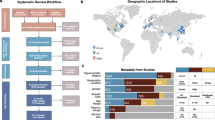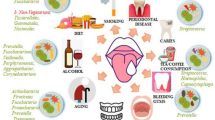Abstract
Saliva is an informative body fluid that can be found at various crime scenes, and the salivary bacterial community has been revealed it is a potential auxiliary target for forensic identification. However, the variation of salivary bacterial community composition across time and geolocation needs to be explored. The study was designed to be carried out during the winter vacation that was across about 50 days and eight geographic locations. The high throughput sequencing was performed with the V3–V4 region of the16S rRNA gene to explore salivary bacterial community composition. An overall slight fluctuation of the salivary bacteria was observed, which primarily occurred in the relative abundance of the salivary bacterial taxa. The results of principal coordinate analysis and hierarchical clustering showed samples were clustered by the individuals. All individuals could be correctly identified with the random forest model. In summation, although the relative abundance of salivary bacteria varied across the changes of time and geolocation, the individualized characteristic of salivary bacteria remained steady, which is beneficial for the salivary bacterial application in personal identification.





Similar content being viewed by others
Data availability
The original contributions presented in the study are publicly available. This data can be found here: PRJNA896345.
References
Cho HW, Eom YB (2021) Forensic analysis of human microbiome in skin and body fluids based on geographic location. Fronti Cell Infect Microbiol 11:695191. https://doi.org/10.3389/fcimb.2021.695191
Marsh PD, Do T, Beighton D, Devine DA (2016) Influence of saliva on the oral microbiota. Periodontology 2000 70(1):80–92. https://doi.org/10.1111/prd.12098
He J, Li Y, Cao Y, Xue J, Zhou X (2015) The oral microbiome diversity and its relation to human diseases. Folia Microbiol 60(1):69–80. https://doi.org/10.1007/s12223-014-0342-2
Human Microbiome Project Consortium (2012) Structure, function and diversity of the healthy human microbiome. Nature 486(7402):207–214. https://doi.org/10.1038/nature11234
Turnbaugh PJ, Ley RE, Hamady M, Fraser-Liggett CM, Knight R, Gordon JI (2007) The human microbiome project. Nature 449(7164):804–810. https://doi.org/10.1038/nature06244
Schmedes SE, Sajantila A, Budowle B (2016) Expansion of microbial forensics. J Clin Microbiol 54(8):1964–1974. https://doi.org/10.1128/JCM.00046-16
Kennedy DM, Stanton JA, García JA, Mason C, Rand CJ, Kieser JA, Tompkins GR (2012) Microbial analysis of bite marks by sequence comparison of streptococcal DNA. PloS One 7(12):e51757. https://doi.org/10.1371/journal.pone.0051757
Leake SL, Pagni M, Falquet L, Taroni F, Greub G (2016) The salivary microbiome for differentiating individuals: proof of principle. Microbes Infect 18(6):399–405. https://doi.org/10.1016/j.micinf.2016.03.011
Costello EK, Lauber CL, Hamady M, Fierer N, Gordon JI, Knight R (2009) Bacterial community variation in human body habitats across space and time. Science (New York, N.Y.) 326(5960):1694–1697. https://doi.org/10.1126/science.1177486
Wang S, Song F, Gu H, Wei X, Zhang K, Zhou Y, Luo H (2022) Comparative evaluation of the salivary and buccal mucosal microbiota by 16S rRNA sequencing for forensic investigations. Front Microbiol 13:777882. https://doi.org/10.3389/fmicb.2022.777882
Gül F, Karadayı S, Yurdabakan Z, Özbek T, Karadayı B (2022) Investigating changes in salivary microbiota due to dental treatment: a metagenomic analysis study for forensic purposes. Forensic Sci Int 340:111447. https://doi.org/10.1016/j.forsciint.2022.111447
Bozza S, Scherz V, Greub G, Taroni F (2022) A probabilistic approach to evaluate salivary microbiome in forensic science when the Defense says: ‘It is my twin brother.’ Forensic Sci Int Genet 57:102638. https://doi.org/10.1016/j.fsigen.2021.102638
Sedghi L, DiMassa V, Harrington A, Lynch SV, Kapila YL (2021) The oral microbiome: role of key organisms and complex networks in oral health and disease. Periodontology 2000 87(1):107–131. https://doi.org/10.1111/prd.12393
Gupta VK, Paul S, Dutta C (2017) Geography, ethnicity or subsistence-specific variations in human microbiome composition and diversity. Front Microbiol 8:1162. https://doi.org/10.3389/fmicb.2017.01162
Belstrøm D, Holmstrup P, Bardow A, Kokaras A, Fiehn NE, Paster BJ (2016) Temporal stability of the salivary microbiota in oral health. PloS One 11(1):e0147472. https://doi.org/10.1371/journal.pone.0147472
Callahan BJ, McMurdie PJ, Rosen MJ, Han AW, Johnson AJ, Holmes SP (2016) DADA2: high-resolution sample inference from Illumina amplicon data. Nat Methods 13(7):581–583. https://doi.org/10.1038/nmeth.3869
Staheli JP, Boyce R, Kovarik D, Rose TM (2011) CODEHOP PCR and CODEHOP PCR primer design. Methods Mol Biol(Clifton, N.J.) 687:57–73. https://doi.org/10.1007/978-1-60761-944-4_5
Wilkins D, Tong X, Leung MHY, Mason CE, Lee PKH (2021) Diurnal variation in the human skin microbiome affects accuracy of forensic microbiome matching. Microbiome 9(1):129. https://doi.org/10.1186/s40168-021-01082-1
Hall MW, Singh N, Ng KF, Lam DK, Goldberg MB, Tenenbaum HC, Neufeld JD, G. Beiko R, Senadheera DB. (2017) Inter-personal diversity and temporal dynamics of dental, tongue, and salivary microbiota in the healthy oral cavity. NPJ Biofilms Microbiomes 3:2. https://doi.org/10.1038/s41522-016-0011-0
Mukherjee C, Beall CJ, Griffen AL, Leys EJ (2018) High-resolution ISR amplicon sequencing reveals personalized oral microbiome. Microbiome 6(1):153. https://doi.org/10.1186/s40168-018-0535-z
Cameron SJ, Huws SA, Hegarty MJ, Smith DP, Mur LA (2015) The human salivary microbiome exhibits temporal stability in bacterial diversity. FEMS Microbiol Ecol 91(9):091. https://doi.org/10.1093/femsec/fiv091
Lazarevic V, Whiteson K, Hernandez D, François P, Schrenzel J (2010) Study of inter- and intra-individual variations in the salivary microbiota. BMC Genomics 11:523. https://doi.org/10.1186/1471-2164-11-523
Gilbert JA, Blaser MJ, Caporaso JG, Jansson JK, Lynch SV, Knight R (2018) Current understanding of the human microbiome. Nat Med 24(4):392–400. https://doi.org/10.1038/nm.4517
Flores GE, Caporaso JG, Henley JB, Rideout JR, Domogala D, Chase J, Leff JW, Vázquez-Baeza Y, Gonzalez A, Knight R, Dunn RR, Fierer N (2014) Temporal variability is a personalized feature of the human microbiome. Genome Biol 15(12):531. https://doi.org/10.1186/s13059-014-0531-y
Song J, Gao Y, Yin P, Li Y, Li Y, Zhang J, Su Q, Fu X, Pi H (2021) The random forest model has the best accuracy among the four pressure ulcer prediction models using machine learning algorithms. Risk Manag Healthc Policy 14:1175–1187. https://doi.org/10.2147/RMHP.S297838
Liang X, Han X, Liu C, Du W, Zhong P, Huang L, Huang M, Fu L, Liu C, Chen L (2022) Integrating the salivary microbiome in the forensic toolkit by 16S rRNA gene: potential application in body fluid identification and biogeographic inference. Int J Legal Med 136(4):975–985. https://doi.org/10.1007/s00414-022-02831-z
Toyomane K, Yokota R, Watanabe K, Akutsu T, Asahi A, Kubota S (2021) Evaluation of CRISPR diversity in the human skin microbiome for personal identification. mSystems 6(1):e01255-20. https://doi.org/10.1128/mSystems.01255-20
Schmedes SE, Woerner AE, Novroski NMM, Wendt FR, King JL, Stephens KM, Budowle B (2018) Targeted sequencing of clade-specific markers from skin microbiomes for forensic human identification. Forensic Sci Int Genet 32:50–61. https://doi.org/10.1016/j.fsigen.2017.10.004
Zheng Y, Shi J, Chen Q, Deng C, Yang F, Wang Y (2022) Identifying individual-specific microbial DNA fingerprints from skin microbiomes. Front Microbiol 13:960043. https://doi.org/10.3389/fmicb.2022.960043
Acknowledgements
We thank the volunteers for their participation in this study. This study was funded by the National Natural Science Foundation of China [grant numbers: 81772030].
Author information
Authors and Affiliations
Corresponding authors
Ethics declarations
Competing interests
The authors declare no competing interests.
Additional information
Publisher’s note
Springer Nature remains neutral with regard to jurisdictional claims in published maps and institutional affiliations.
Supplementary Information
Additional file 1.
Fig. S1. The Jaccard distances between individualsand within individuals. Fig. S2. TheNMDS plots based on Jaccard distance. A: the samples were grouped byparticipants; B: the samples were grouped by sampling time points. Fig. S3. ThePCoA based on Bray-Curtis distance. The samples were grouped by the participants.
Additional file 2.
Table S1. The detail count value and taxonomy information for the top 30 important taxa in each sample.
Rights and permissions
Springer Nature or its licensor (e.g. a society or other partner) holds exclusive rights to this article under a publishing agreement with the author(s) or other rightsholder(s); author self-archiving of the accepted manuscript version of this article is solely governed by the terms of such publishing agreement and applicable law.
About this article
Cite this article
Wang, S., Song, F., Song, M. et al. Explore variation of salivary bacteria across time and geolocations. Int J Legal Med 138, 547–554 (2024). https://doi.org/10.1007/s00414-023-03045-7
Received:
Accepted:
Published:
Issue Date:
DOI: https://doi.org/10.1007/s00414-023-03045-7




